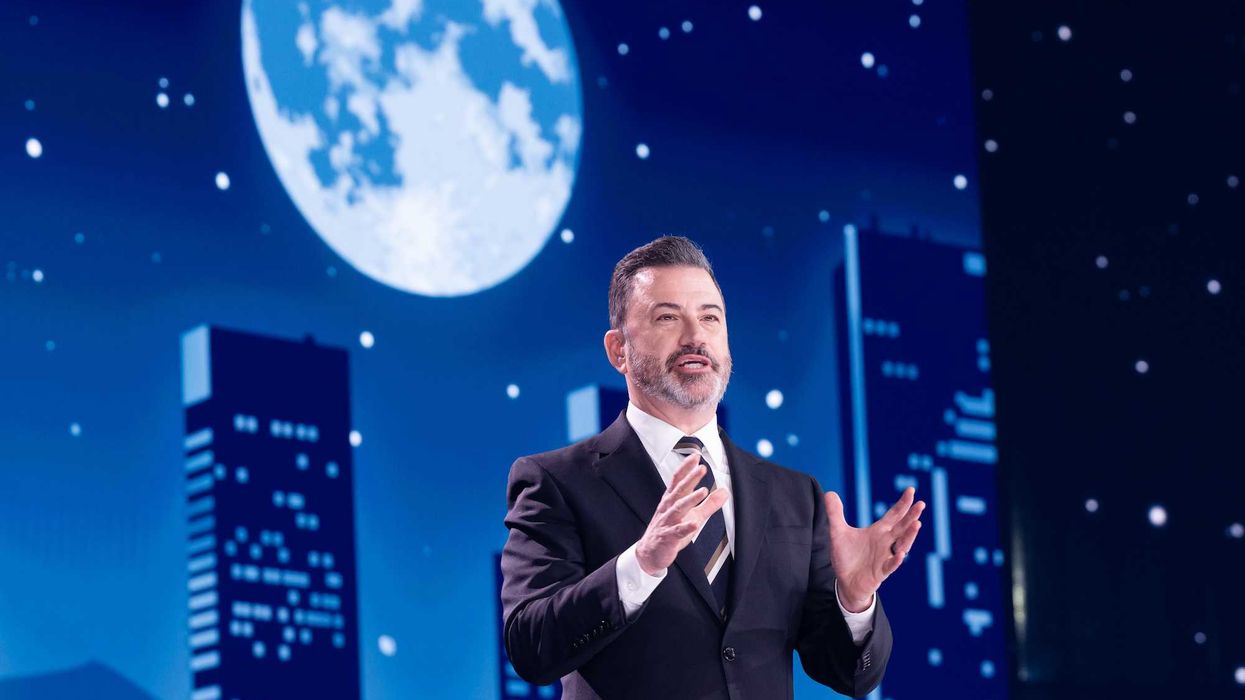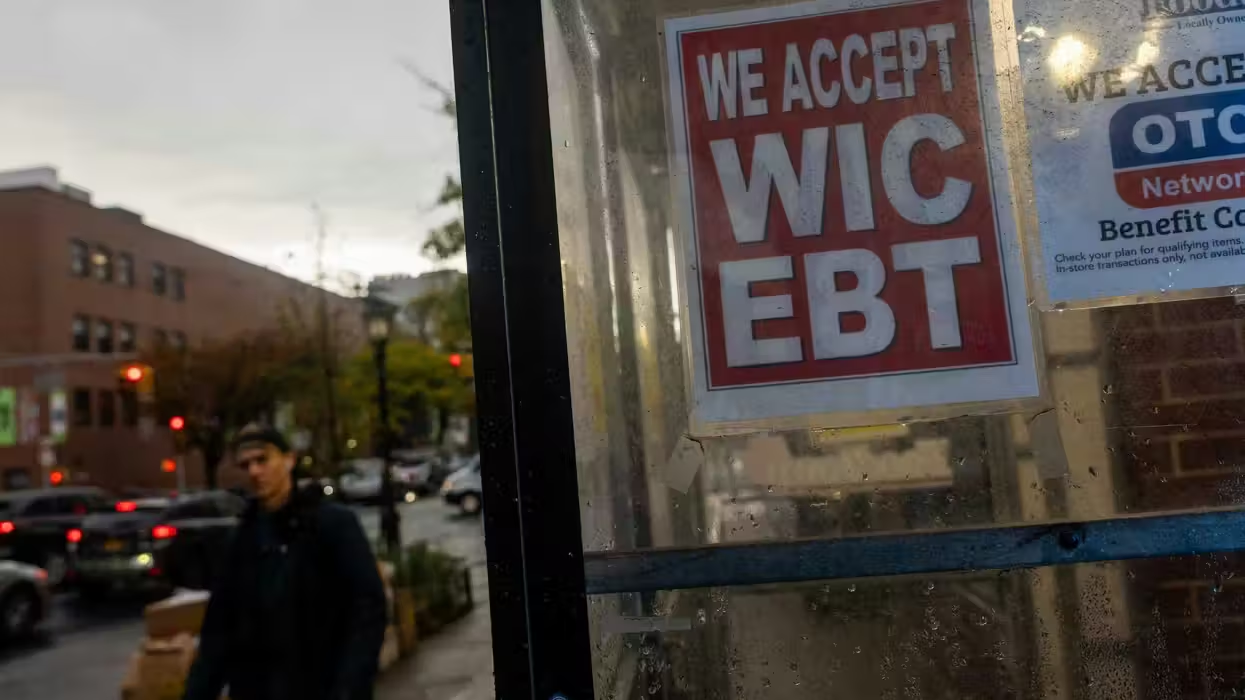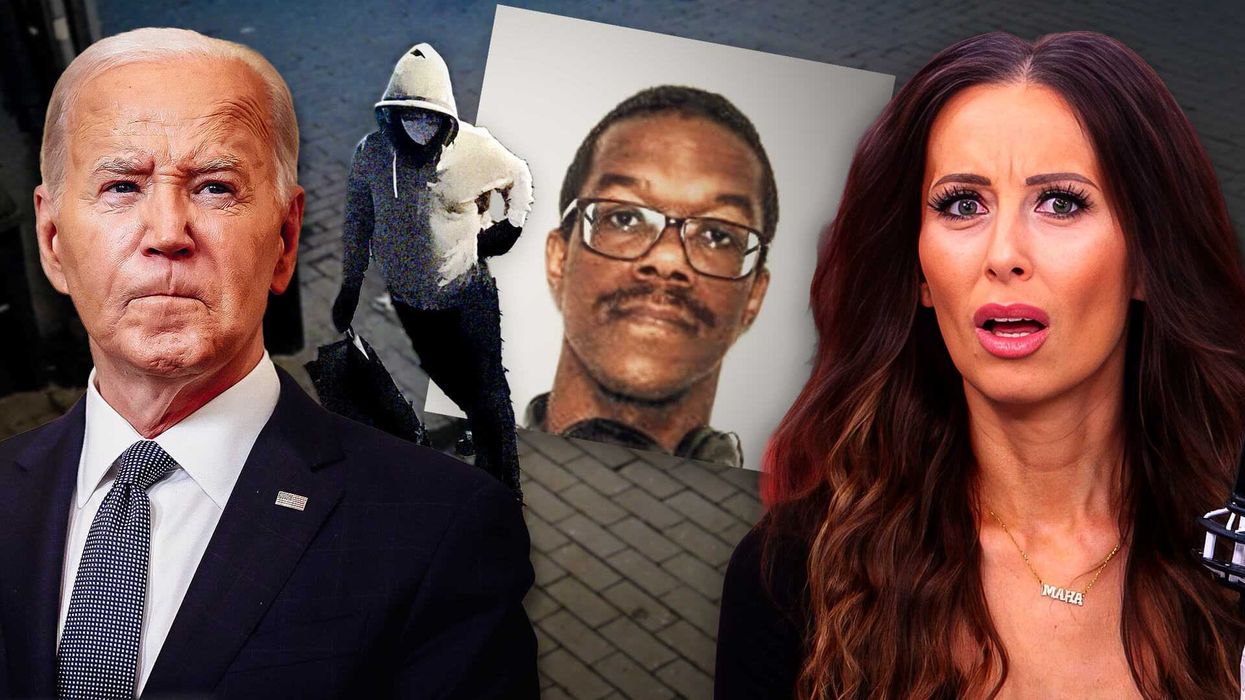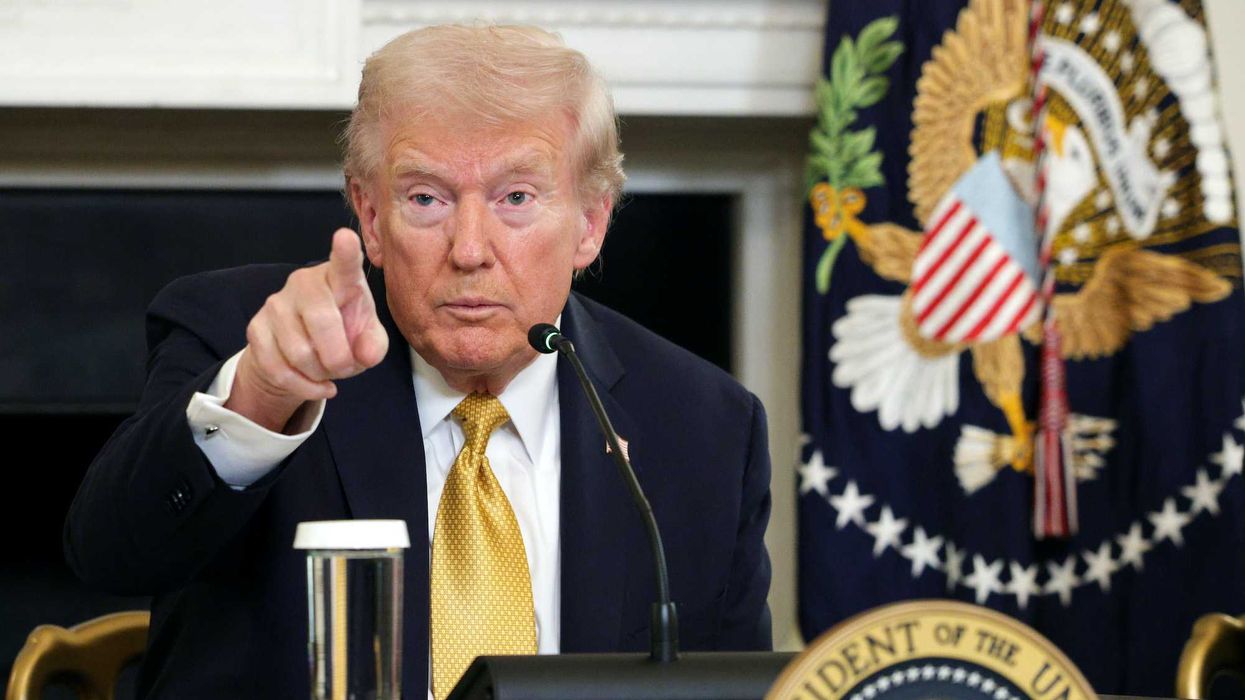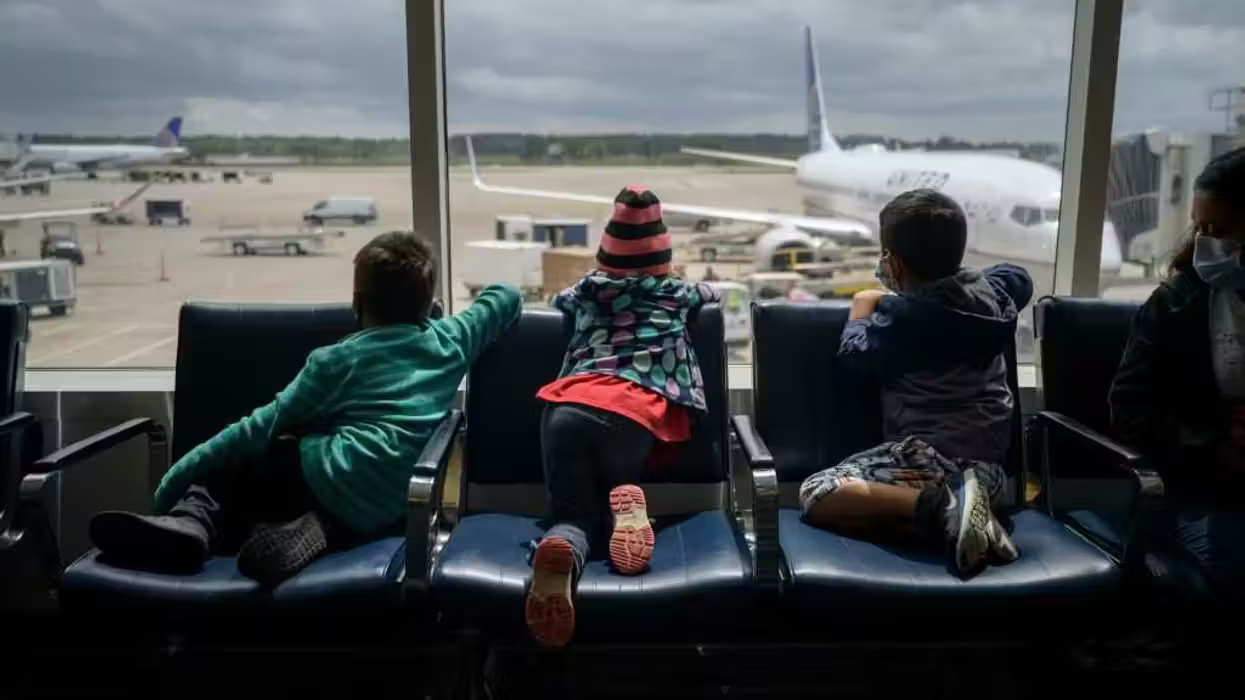The urgency to adopt a new transportation bill has grown exponentially over the past several weeks.
The Highway Trust Fund (HTF) is estimated to run dry toward the end of this summer, with the broader multi-year law that funds federal surface transportation programs expiring at the end of September.
Support for improving transportation infrastructure is bipartisan, with millions of Republican, Democrat and Independent motorists equally fed up with roads littered with potholes and crumbling bridges.
 Construction crews use barges and cranes as work continues on a replacement for the 58-year-old Tappan Zee Bridge spanning the Hudson River, Tuesday, May 13, 2014, near Tarrytown, N.Y. On Wednesday, President Barack Obama plans to speak by the bridge just north of New York City to press his case that a key federal government fund used to pay for the nation's roads, bridges and ports is running dry and that the economy would be damaged if it is not replenished. (AP Photo/Julie Jacobson)
Construction crews use barges and cranes as work continues on a replacement for the 58-year-old Tappan Zee Bridge spanning the Hudson River, Tuesday, May 13, 2014, near Tarrytown, N.Y. On Wednesday, President Barack Obama plans to speak by the bridge just north of New York City to press his case that a key federal government fund used to pay for the nation's roads, bridges and ports is running dry and that the economy would be damaged if it is not replenished. (AP Photo/Julie Jacobson)
Unfortunately, the propensity for Washington politicians to waste precious transportation dollars on irresponsible expenditures that have nothing to do with repairing our roads is also bipartisan, leaving the American people high and dry – on the hook for wasteful spending, and stuck in traffic.
Recently, the White House, the House of Representatives Appropriations committee, and the Senate Environment and Public Works committee all released their own transportation proposals. All three largely leave in place the systemic problems that have resulted in the unsustainability of transportation funding. Since 2008, HTF has been bailed out with $54 billion.
The White House’s “GROW AMERICA Act” is a four-year, $302 billion bill that increases funding by 37 percent. The $199 billion for highways and roads is a 22 percent increase – but the $72 billion for transit and “expanded options” is a 70 percent increase.
This outrageous jump is a blatant example of the White House’s misguided priorities. Rather than increasing focus on improving the most widely used transportation infrastructure –roads – the administration wants to use funds meant for roads to invest in little-used transit and advance their environmental agenda in the process.
 The Capitol Limited Amtrak train arrives in Washington from Chicago after a 3 1/2 hour delay Tuesday, Feb. 20, 2007. The 764-mile Chicago to Washington route is among Amtrak's most dismal performers, with just 11 percent of trains arriving within 30 minutes of their scheduled time last year. But the problem exists to one degree or another on the majority of Amtrak routes, because In most of the country, the national passenger railroad operates on tracks owned by freight railroads, and the tracks are badly congested. (AP Photo/Jacquelyn Martin)
The Capitol Limited Amtrak train arrives in Washington from Chicago after a 3 1/2 hour delay Tuesday, Feb. 20, 2007. The 764-mile Chicago to Washington route is among Amtrak's most dismal performers, with just 11 percent of trains arriving within 30 minutes of their scheduled time last year. But the problem exists to one degree or another on the majority of Amtrak routes, because In most of the country, the national passenger railroad operates on tracks owned by freight railroads, and the tracks are badly congested. (AP Photo/Jacquelyn Martin)
The proposal also includes $87 billion to “shore up” HTF and $19 billion for rail (including massive investments for Amtrak, the poster-child of government inefficiency). The White House wants to pay for their bill through increased taxes on businesses or allowing states more flexibility to toll drivers. Of course, eliminating wasteful and misguided spending could eliminate the need for increased revenue.
Meanwhile, the Senate EPW bill is a six-year reauthorization of the current transportation bill, maintaining current spending levels plus inflation. Like the White House proposal, the Senate bill fails to eliminate wasteful spending on projects that are inherently local and represent a misuse of funds meant to improve roads and bridges. The current formula is obviously unsustainable, and the Senate EPW proposal does nothing to change the direction that has left HTF constantly needing enormous bailouts from the general fund.
The House Appropriations Transportation, Housing, and Urban Development (THUD) proposal is the only one of the three that contains some promising reforms.
It includes over $40 billion for the federal highway program, but makes important spending cuts to misguided expenditures. For example, no funding is provided for high-speed rail. There are cuts and efficiency improvements for Amtrak, and cuts to TIGER grants, as well as a provision that prevent the grants from being used on non-essential purposes. Still, even this plan has shortcomings that could be improved in order to repair and secure transportation funding and the quality of American infrastructure for the future.
 A detour sign is seen on the side of the road south of the Pulaski Skyway, Saturday, April 12, 2014, in Kearny, N.J. The northbound side of the Pulaski Skyway was closed on Saturday and will remain closed for two years while $1 billion in repairs are done to the aging bridge. An estimated 40,000 motorists who take the Skyway toward Jersey City and The Holland Tunnel every day are being urged to carpool, take the Turnpike extension or other alternate routes or use public transportation. (AP Photo/Julio Cortez)
A detour sign is seen on the side of the road south of the Pulaski Skyway, Saturday, April 12, 2014, in Kearny, N.J. The northbound side of the Pulaski Skyway was closed on Saturday and will remain closed for two years while $1 billion in repairs are done to the aging bridge. An estimated 40,000 motorists who take the Skyway toward Jersey City and The Holland Tunnel every day are being urged to carpool, take the Turnpike extension or other alternate routes or use public transportation. (AP Photo/Julio Cortez)
The general principles that would improve transportation infrastructure funding in the United States are not complex.
The federal government needs to refocus its priorities and return more decision rights to the states. Gas tax revenue-dollars that are collected as a user fee and intended to fund road repair and maintenance should actually be spent entirely on road repair and maintenance.
Federal dollars should not be spent on inherently local projects, or on projects that have nothing to do with improving the urgent needs of transportation infrastructure; it is not fair to make taxpayers in Kansas fund the New York City subway. Nor is it right that New Hampshire families are paying for covered bridges in South Carolina.
Too much federal government intrusion has once again created a problem that politicians are attempting to solve with even more federal government intrusion, when in reality, federalist policies and free-market reforms are the right answer to saving taxpayer dollars and creating happy travelers.
Akash Chougule is a policy analyst at Americans for Prosperity, the nation’s premier free-market grassroots organization. Akash brings a unique perspective to AFP, and specializes in education, health care, tax, and transportation issues.
–
TheBlaze contributor channel supports an open discourse on a range of views. The opinions expressed in this channel are solely those of each individual author.


 Construction crews use barges and cranes as work continues on a replacement for the 58-year-old Tappan Zee Bridge spanning the Hudson River, Tuesday, May 13, 2014, near Tarrytown, N.Y. On Wednesday, President Barack Obama plans to speak by the bridge just north of New York City to press his case that a key federal government fund used to pay for the nation's roads, bridges and ports is running dry and that the economy would be damaged if it is not replenished. (AP Photo/Julie Jacobson)
Construction crews use barges and cranes as work continues on a replacement for the 58-year-old Tappan Zee Bridge spanning the Hudson River, Tuesday, May 13, 2014, near Tarrytown, N.Y. On Wednesday, President Barack Obama plans to speak by the bridge just north of New York City to press his case that a key federal government fund used to pay for the nation's roads, bridges and ports is running dry and that the economy would be damaged if it is not replenished. (AP Photo/Julie Jacobson)

